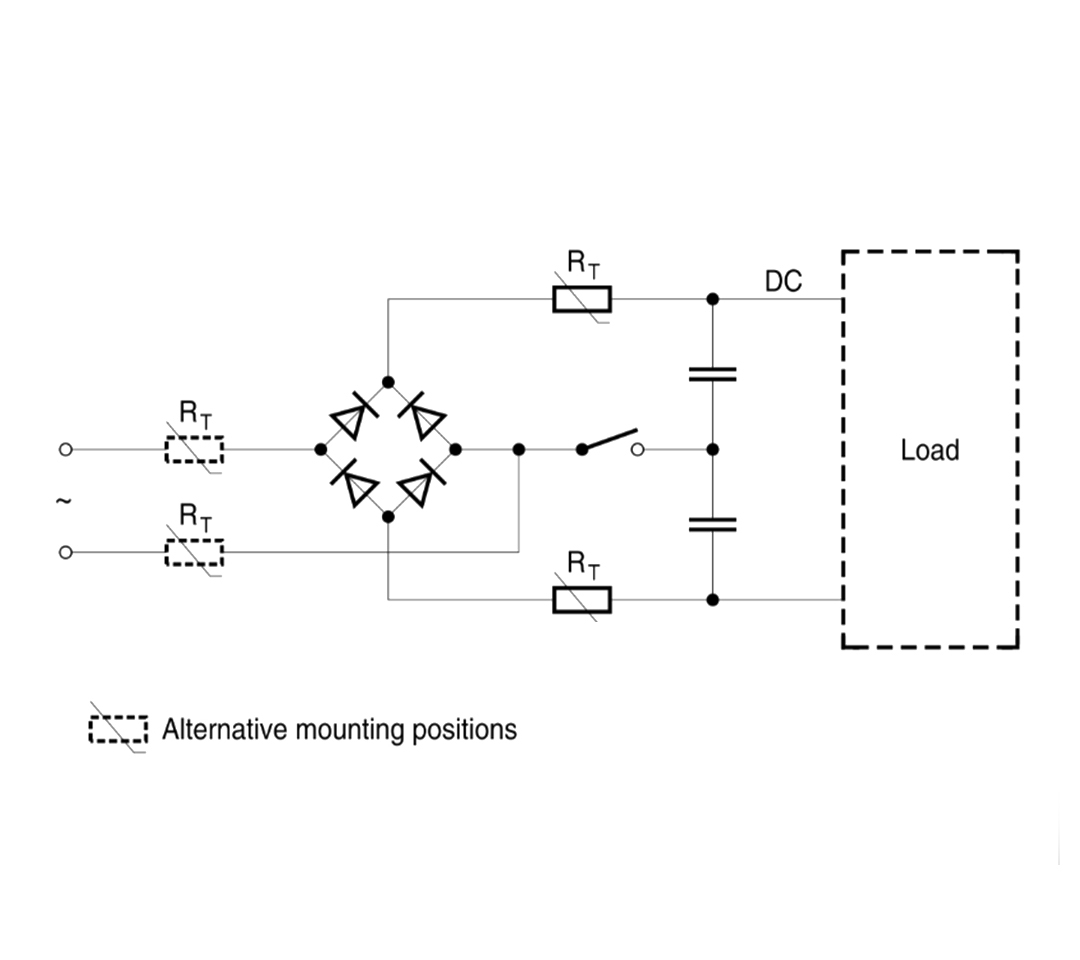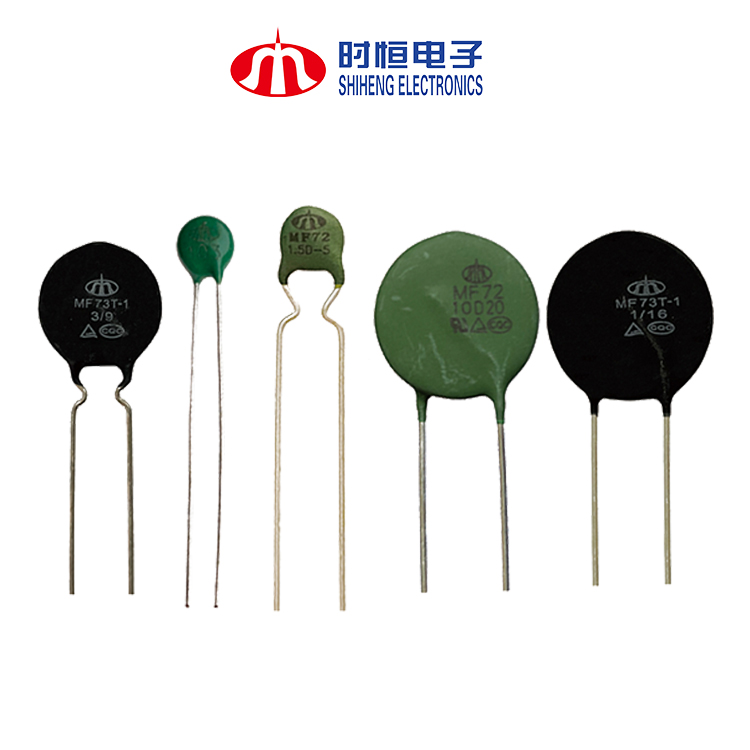ตัวจำกัดกระแสไฟฟ้ากระชาก NTC ช่วยปกป้องอุปกรณ์อิเล็กทรอนิกส์กำลังจากไฟกระชากขณะสตาร์ทได้อย่างไร
Jul 30, 2025เมื่ออุปกรณ์ไฟฟ้าเปิดเครื่อง มักจะเกิดกระแสไฟฟ้ากระชากอย่างกะทันหัน ซึ่งเรียกว่า กระแสไฟฟ้ากระชาก (inrush current) ซึ่งอาจสูงกว่ากระแสไฟฟ้าขณะทำงานแบบคงที่หลายเท่า กระแสไฟฟ้ากระชากนี้อาจทำให้ชิ้นส่วนที่บอบบางเสียหาย ฟิวส์ขาด หรือทำให้อายุการใช้งานของระบบสั้นลง อุปกรณ์จำกัดกระแสไฟฟ้ากระชาก NTC จึงเข้ามามีบทบาทสำคัญ
กระแสไฟฟ้ากระชาก (Inrush current) คือกระแสกระชากเริ่มต้นที่ไหลเข้าสู่อุปกรณ์เมื่อได้รับกระแสไฟฟ้าครั้งแรก เกิดขึ้นเนื่องจากตัวเก็บประจุที่ไม่มีประจุทำหน้าที่เหมือนไฟฟ้าลัดวงจร และส่วนประกอบแม่เหล็ก เช่น หม้อแปลงไฟฟ้า จะดึงกระแสแม่เหล็กสูงเมื่อเริ่มต้นใช้งาน
ปัญหาทั่วไปที่เกิดจากกระแสไฟกระชาก ได้แก่:
เทอร์มิสเตอร์ NTC (ค่าสัมประสิทธิ์อุณหภูมิติดลบ) เป็นตัวต้านทานที่ไวต่ออุณหภูมิความต้านทานอินฟราเรด ลดลงเมื่ออุณหภูมิสูงขึ้น เทอร์มิสเตอร์ NTC เสนอการป้องกันแบบสองขั้นตอน:
1. เมื่อเริ่มต้นใช้งาน: เทอร์มิสเตอร์จะเย็นและให้ความต้านทานสูง จึงจำกัดกระแสไฟกระชาก
2. ระหว่างการทำงาน: เมื่อกระแสไหลผ่านเทอร์มิสเตอร์ เทอร์มิสเตอร์จะเกิดความร้อนขึ้นเอง ความต้านทานจะลดลง ทำให้กระแสไหลผ่านได้ตามปกติโดยสูญเสียพลังงานน้อยที่สุด
ซึ่งทำให้เทอร์มิสเตอร์ NTC เป็นโซลูชันที่คุ้มต้นทุนและประหยัดพื้นที่เมื่อเปรียบเทียบกับตัวต้านทานแบบคงที่แบบดั้งเดิมหรือวงจรรีเลย์ที่ซับซ้อน
Nทีซี ตัวจำกัดกระแสไฟฟ้ากระชาก โดยทั่วไปจะวางแบบอนุกรมกับโหลดและกำลังไฟเข้า การจัดวางแบบนี้ทำให้เหมาะอย่างยิ่งสำหรับ:
⚠ หมายเหตุสำคัญ: ห้ามใช้เทอร์มิสเตอร์ NTC ขนานกัน เนื่องจากความไม่สมดุลของกระแสไฟอาจทำให้เกิดความร้อนสูงเกินไปหรือเสียหายได้
เมื่อเลือก ตัวจำกัดกระแสไฟฟ้ากระชาก NTCวิศวกรควรพิจารณา:
เทอร์มิสเตอร์ NTC ถูกใช้กันอย่างแพร่หลายในอุตสาหกรรมต่างๆ:

ที่ Shiheng Electronics เรานำเสนอเครื่องจำกัดกระแสไฟฟ้ากระชาก NTC แบบครบวงจรด้วยกำลังไฟฟ้าตั้งแต่ 1.5W ถึง 36W และรองรับกระแสไฟฟ้าต่อเนื่องได้สูงถึง 50A AC ซึ่งออกแบบมาสำหรับการใช้งานที่หลากหลาย
ต้องการความช่วยเหลือในการเลือกชิ้นส่วนที่ถูกต้องสำหรับการออกแบบของคุณหรือไม่? ติดต่อเราได้วันนี้ สำหรับแผ่นข้อมูล ตัวอย่าง หรือการสนับสนุนด้านเทคนิค